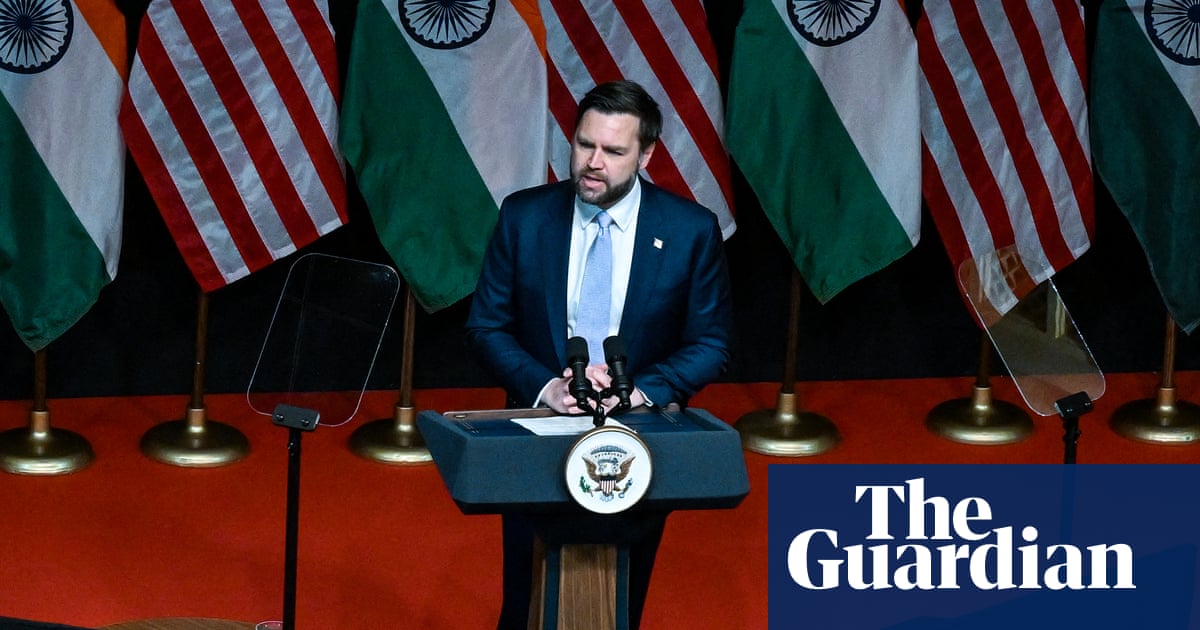JD Vance has described the US-India partnership as the cornerstone of global progress, warning that the 21st century could be “a very dark time for all of humanity” if the two countries fail to cooperate.
In the keynote policy speech of his four-day visit toIndia, the US vice president contrasted the country’s “incredible” potential with a “self-loathing” west.
“I really believe that the future of the 21st century is going to be determined by the strength of the US-India partnership,” Vance told business leaders, diplomats, and government officials in the north-west tourist city of Jaipur.
Vance praised India as a rising power, confident in its national identity and “a sense of infinite possibility”, in stark contrast to the west, which he said was gripped by “self-doubt and even fear of the future”.
To some western leaders, he said, “humanity is always one bad decision away from catastrophe”, adding: “The world will soon end, they tell us, because we’re burning too much fuel or making too many things or having too many children.
“President Trump rejects these failed ideas,” Vance said. “He wants America to grow, he wants India to grow, and he wants to build the future with our partners all over the globe. And when I look at this audience or when I visit this incredible country … I see a people that will not be held back.”
Vance, who met India’s prime minister, Narendra Modi, late on Monday fortalks on trade and regional security, praised the leader as someone who has “thought deeply about India’s future prosperity and security, not just for the rest of his time in office, but over the next century”.
Vance invoked Trump’s slogan of “drill, baby, drill” and said that US oil and gas exports could help India power its rise.
Vance’s time as vice-president has been marked by his assertive “America first” foreign policy.He has irritated European alliesby criticizing their defense spending andsaying that the US has a strategic claim to Greenland.
Sign up toHeadlines US
Get the most important US headlines and highlights emailed direct to you every morning
after newsletter promotion
Vance said US and Indian negotiators have now finalized “terms of reference” for a bilateral trade agreement that Delhi is urgently seeking, in hopes that it will allow the country to dodge steep tariff increases announced by Trump.
The vice-president gave no details about the contents of the talks, but he said cooperation between the two countries could lead to co-production of military hardware, partnerships in autonomous maritime systems, and investments in undersea cables, pharmaceuticals, and data centres.
The US is India’s top trading partner. The two countries have set an ambitious goal of doubling their bilateral trade to $500 billion by 2030.
Vance pitched for the US to supply more military equipment to India, including the F-35 stealth fighter. India has relied heavily on Russian-made military equipment and armaments over the past decade, but has slowly been diversifying and buying from the US, France, and the UK.
“In India, America has a friend,” he said. “And we seek to strengthen the warm bonds our great nations already share … This is very much a win-win partnership.”
The US sees India as an important counterweight to China’s growing clout. Modi said Monday he was looking forward to a visit by Trump later in the year to attend a meeting ofthe Quad, the four-nation security group comprising the US, India, Japan, and Australia.
